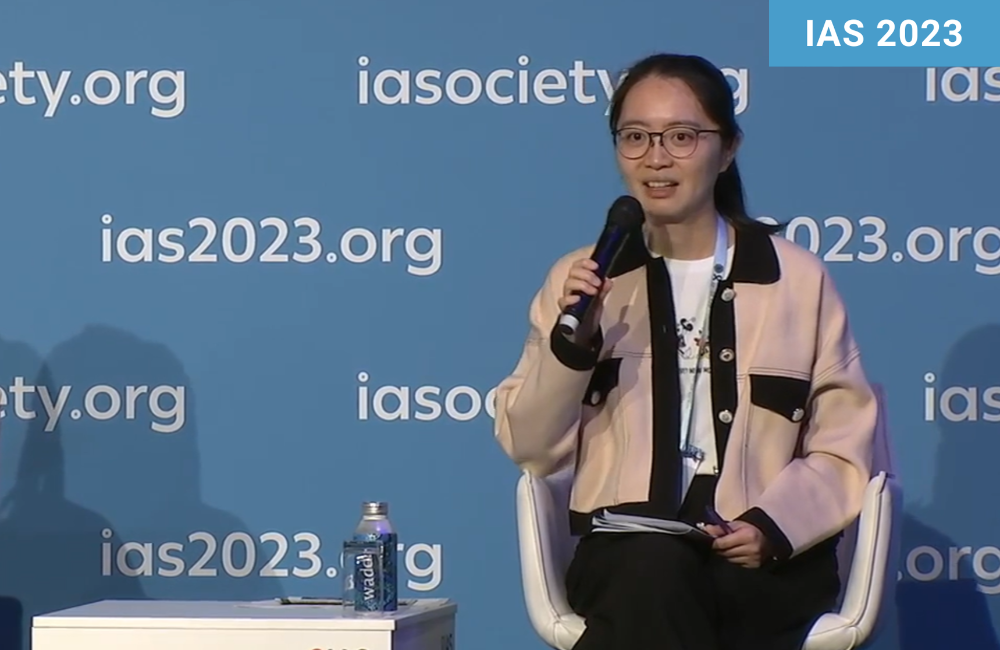
Children whose mothers used tenofovir-based pre-exposure prophylaxis (PrEP) during pregnancy did not have reduced bone density or stunted growth as compared with unexposed infants, according to study findings presented at the 12th International AIDS Society Conference on HIV Science (IAS 2023).
“Our findings bolstered the safety profile of PrEP use for pregnant women,” presenter Dr Linxuan Wu of the University of Washington in Seattle and colleagues concluded.
Tenofovir disoproxil fumarate (TDF), a drug widely used for both HIV treatment and prevention, has been associated with kidney impairment and bone loss in susceptible individuals.
Previous studies have looked at the effects of prenatal exposure among infants whose mothers used TDF as part of an HIV treatment regimen during pregnancy. The SMARTT study, for example, showed that exposed infants had lower bone mineral content than unexposed infants but no differences in length or weight. Another study found that exposed infants were shorter at one month, but this was no longer the case at one year. Less is known about TDF exposure among infants whose mothers use PrEP during pregnancy, and in particular about longer-term outcomes beyond infancy.
Wu and colleagues analysed data from the PrIMA study (NCT03070600), an ongoing evaluation of perinatal PrEP use in Kenya. In the main study, 4447 HIV-negative pregnant women were offered tenofovir-based PrEP at 20 public maternal and child health clinics and followed through nine months after delivery.
An extension study is continuing to follow children at four clinics through five years. As reported at last year’s International AIDS Conference, an assessment by study nurses found that children exposed to PrEP in the womb showed no notable differences in their growth or neurological development for up to three years.
Wu’s team performed a more in-depth analysis of bone mineral density (BMD) in a randomly selected subset of 40 PrEP-exposed and 71 matched unexposed children at three years. BMD was assessed by whole-body dual-energy x-ray absorptiometry (DEXA) scanning, which Wu noted is a painless and noninvasive procedure using low-level radiation.
A majority of the children (60%) were boys and the median age at the time of the scans was 37 months. In utero exposure was defined as any PrEP prescription during pregnancy and mothers’ self-reported use, though in practice they received oral TDF, not the newer tenofovir alafenamide (which is easier on kidneys and bones) or injectable cabotegravir. Just over half (52%) started PrEP during the second trimester, 43% during the third trimester and only 5% during the first trimester. The mothers used PrEP for a median of 12 weeks and a maximum of 17 weeks during pregnancy.
The median height was similar for children with and without PrEP exposure in the womb (94.3cm vs 94.0cm, respectively), Wu reported. Whole body bone density was also statistically similar, 418.5 vs 423.0 mg/cm2, respectively. After adjustment, the mean difference in whole-body BMD was -21.6 mg/cm2 in the exposed group, which was not deemed clinically meaningful.
“PrEP exposure was not associated with BMD or height at 36 months among children with mothers who used PrEP during pregnancy in this ongoing cohort,” the researchers concluded. “Our findings suggest that in utero PrEP exposure may not impact BMD into early childhood.”
The study will continue to evaluate the children with DEXA scans through five years, and the investigators will better quantify PrEP exposure by looking at tenofovir levels in hair and dried blood spots.
Wu L et al. No association between in-utero PrEP exposure and bone mineral density at 36 months of age among mother-infant pairs in Kenya. 12th IAS Conference on HIV Science, Brisbane, abstract OAC0402, 2023.
View the study abstract on the conference website.
